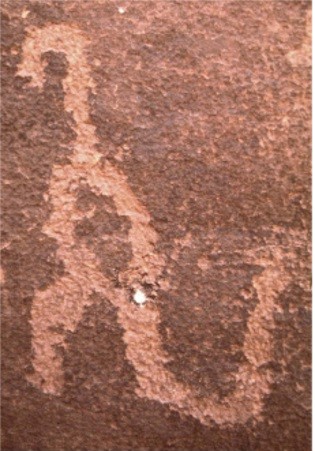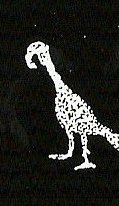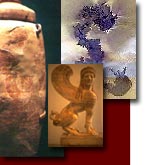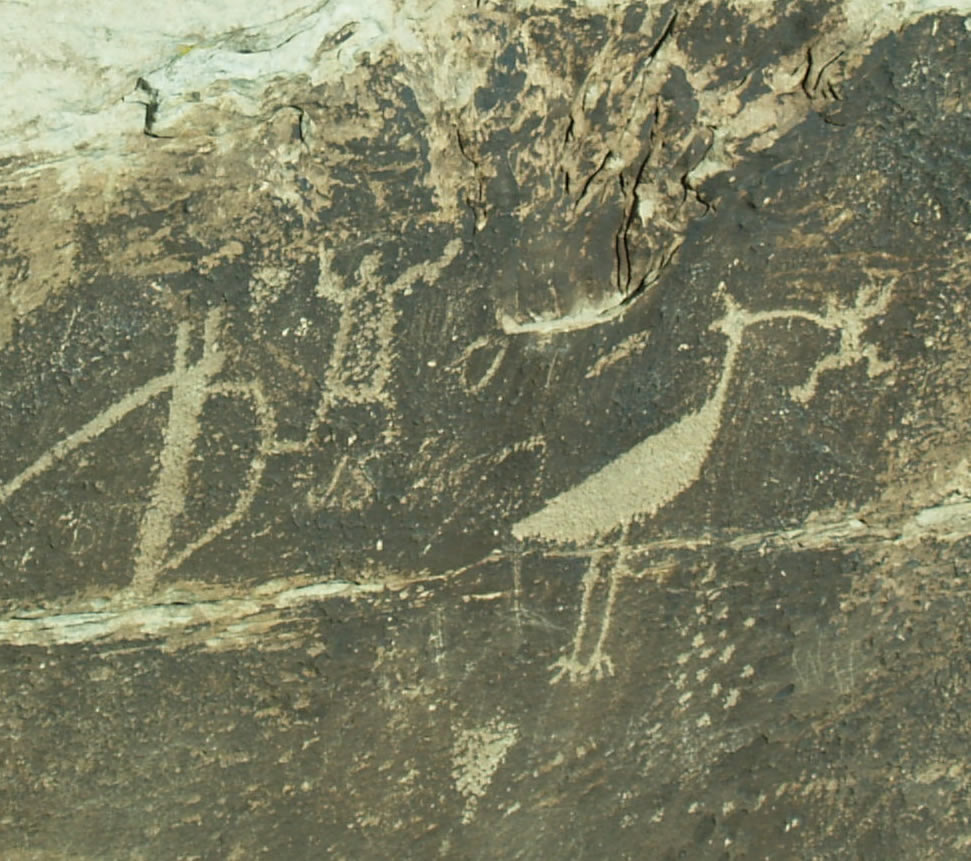| Site Map | Contacts | Links | Newsletter | |
Petroglyphs
Are Dinosaurs pictured in Petroglyphs?


The petroglyph on the left was found by the 1924 Doheny Expedition in the Havai Supai Canyon (Grand Canyon) in 1924. Some say this is a dinosaur.
The petroglyph sketch on the right is an eagle found in many places in the Southwest (from the book Tapamveni : Rock Art Galleries of the SouthWest by McCreery and Malotki, 1994) . See other petroglyph sketches of birds below from the same book:

One of the key features is the hooked beak. Another key feature is that there are no arms. There is also a tail (of feathers). It seems clear on comparison that this is not a dinosaur, but most likely an eagle. Native Americas would capture a baby eagle and bring it back to the village. The feathers were sacred. At the appointed time the eagle would be sacrificed. There are petroglyphs of eagles to mark where an eagle's nest was located. The petroglyph in the Grand Canyon probably marked where an eagle's nest used to be.
Petroglyphs from the Petrified Forest.
On my visit to Arizona I was able to drive through the Petrified Forest. I did not realize that there were Indian ruins and many petroglyphs in the park. Here are a few pictures I took.
Indian ruins with nearby petroglyphs.
These drawings are a warning to hostile Indians. Pictured is the Blue Heron on the right considered to be a deity. On the left is He'e'e the maiden warrior who deafeated hostile indians. She has one long lock of unbraided hair and is holding a bow and arrow. For details see the book Odyssey of the Pueblo Indians, by Willian M. Eaton, pages 50-51.
Written by Stephen C. Meyers 2/26/2008
Bibliography
Eaton, William M. Odyssey of the Pueblo Indians. Paducah: Turner Publishing Compay, 1999.
McCreery and Malotki, Tapamveni: Rock Art Galleries of the Southwest. Arizona: Petrified Forest Museum Association, 1994.
Tyler, Hamilton. Pueblo Birds and Myths. Oklahoma: University of Oklahoma Press, 1979.

